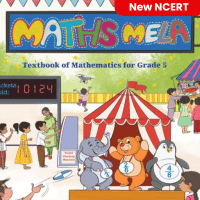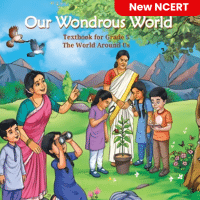Class 5 Exam > Class 5 Questions > What happens if a portion of food chain is br...
Start Learning for Free
What happens if a portion of food chain is broken?
- a)Only consumers would be affected.
- b)All the organisms in the chain are affected.
- c)The decomposers and producers are affected.
- d)No change.
Correct answer is option 'B'. Can you explain this answer?
Verified Answer
What happens if a portion of food chain is broken?a)Only consumers wou...
When any portion of a food chain is broken, all organisms in the chain are affected.
Most Upvoted Answer
What happens if a portion of food chain is broken?a)Only consumers wou...
When a portion of a food chain is broken, it has significant impacts on all the organisms within that chain. Option B, which states that all the organisms in the chain are affected, is the correct answer.
Here's a detailed explanation of why all the organisms in the food chain are affected when a portion of it is broken:
1. Introduction:
A food chain represents the transfer of energy and nutrients from one organism to another. It typically starts with producers (plants), which convert sunlight into energy through photosynthesis. Then, consumers (herbivores, carnivores, and omnivores) feed on the producers, and decomposers break down dead organic matter.
2. Interconnectedness:
The organisms in a food chain rely on each other for survival. Each organism has a specific role and depends on the one before it for its energy and nutrients. For example, a herbivore depends on plants for food, while a carnivore depends on herbivores for its food.
3. Impact on Consumers:
When a portion of the food chain is broken, it directly affects the consumers. If the herbivore population decreases because their food source (plants) is affected, the carnivores that depend on them will also suffer. This can result in a decrease in population or even extinction of certain species within the food chain.
4. Impact on Producers:
The producers (plants) in the food chain are also affected when a portion of it is broken. If there is a decrease in herbivores, plants may experience overgrowth and depletion since there are fewer animals to consume them. This can disrupt the balance in the ecosystem and affect the overall health of the plants.
5. Impact on Decomposers:
Decomposers play a crucial role in breaking down dead organic matter and returning nutrients to the soil. When a portion of the food chain is broken, the availability of dead organic matter may decrease. This can impact the population and functioning of decomposers, leading to a disruption in nutrient cycling and soil health.
6. Ripple Effect:
The impacts of a broken food chain can extend beyond the directly affected organisms. It can create a ripple effect throughout the ecosystem, affecting other species that may depend on the organisms within the food chain. This disruption can lead to imbalances, reduced biodiversity, and potential ecosystem collapse.
In conclusion, when a portion of a food chain is broken, all the organisms within that chain are affected. The interconnectedness of the food chain means that any disturbance or decrease in population of one organism can have cascading effects on the entire ecosystem.
Here's a detailed explanation of why all the organisms in the food chain are affected when a portion of it is broken:
1. Introduction:
A food chain represents the transfer of energy and nutrients from one organism to another. It typically starts with producers (plants), which convert sunlight into energy through photosynthesis. Then, consumers (herbivores, carnivores, and omnivores) feed on the producers, and decomposers break down dead organic matter.
2. Interconnectedness:
The organisms in a food chain rely on each other for survival. Each organism has a specific role and depends on the one before it for its energy and nutrients. For example, a herbivore depends on plants for food, while a carnivore depends on herbivores for its food.
3. Impact on Consumers:
When a portion of the food chain is broken, it directly affects the consumers. If the herbivore population decreases because their food source (plants) is affected, the carnivores that depend on them will also suffer. This can result in a decrease in population or even extinction of certain species within the food chain.
4. Impact on Producers:
The producers (plants) in the food chain are also affected when a portion of it is broken. If there is a decrease in herbivores, plants may experience overgrowth and depletion since there are fewer animals to consume them. This can disrupt the balance in the ecosystem and affect the overall health of the plants.
5. Impact on Decomposers:
Decomposers play a crucial role in breaking down dead organic matter and returning nutrients to the soil. When a portion of the food chain is broken, the availability of dead organic matter may decrease. This can impact the population and functioning of decomposers, leading to a disruption in nutrient cycling and soil health.
6. Ripple Effect:
The impacts of a broken food chain can extend beyond the directly affected organisms. It can create a ripple effect throughout the ecosystem, affecting other species that may depend on the organisms within the food chain. This disruption can lead to imbalances, reduced biodiversity, and potential ecosystem collapse.
In conclusion, when a portion of a food chain is broken, all the organisms within that chain are affected. The interconnectedness of the food chain means that any disturbance or decrease in population of one organism can have cascading effects on the entire ecosystem.

|
Explore Courses for Class 5 exam
|

|
Question Description
What happens if a portion of food chain is broken?a)Only consumers would be affected.b)All the organisms in the chain are affected.c)The decomposers and producers are affected.d)No change.Correct answer is option 'B'. Can you explain this answer? for Class 5 2025 is part of Class 5 preparation. The Question and answers have been prepared according to the Class 5 exam syllabus. Information about What happens if a portion of food chain is broken?a)Only consumers would be affected.b)All the organisms in the chain are affected.c)The decomposers and producers are affected.d)No change.Correct answer is option 'B'. Can you explain this answer? covers all topics & solutions for Class 5 2025 Exam. Find important definitions, questions, meanings, examples, exercises and tests below for What happens if a portion of food chain is broken?a)Only consumers would be affected.b)All the organisms in the chain are affected.c)The decomposers and producers are affected.d)No change.Correct answer is option 'B'. Can you explain this answer?.
What happens if a portion of food chain is broken?a)Only consumers would be affected.b)All the organisms in the chain are affected.c)The decomposers and producers are affected.d)No change.Correct answer is option 'B'. Can you explain this answer? for Class 5 2025 is part of Class 5 preparation. The Question and answers have been prepared according to the Class 5 exam syllabus. Information about What happens if a portion of food chain is broken?a)Only consumers would be affected.b)All the organisms in the chain are affected.c)The decomposers and producers are affected.d)No change.Correct answer is option 'B'. Can you explain this answer? covers all topics & solutions for Class 5 2025 Exam. Find important definitions, questions, meanings, examples, exercises and tests below for What happens if a portion of food chain is broken?a)Only consumers would be affected.b)All the organisms in the chain are affected.c)The decomposers and producers are affected.d)No change.Correct answer is option 'B'. Can you explain this answer?.
Solutions for What happens if a portion of food chain is broken?a)Only consumers would be affected.b)All the organisms in the chain are affected.c)The decomposers and producers are affected.d)No change.Correct answer is option 'B'. Can you explain this answer? in English & in Hindi are available as part of our courses for Class 5.
Download more important topics, notes, lectures and mock test series for Class 5 Exam by signing up for free.
Here you can find the meaning of What happens if a portion of food chain is broken?a)Only consumers would be affected.b)All the organisms in the chain are affected.c)The decomposers and producers are affected.d)No change.Correct answer is option 'B'. Can you explain this answer? defined & explained in the simplest way possible. Besides giving the explanation of
What happens if a portion of food chain is broken?a)Only consumers would be affected.b)All the organisms in the chain are affected.c)The decomposers and producers are affected.d)No change.Correct answer is option 'B'. Can you explain this answer?, a detailed solution for What happens if a portion of food chain is broken?a)Only consumers would be affected.b)All the organisms in the chain are affected.c)The decomposers and producers are affected.d)No change.Correct answer is option 'B'. Can you explain this answer? has been provided alongside types of What happens if a portion of food chain is broken?a)Only consumers would be affected.b)All the organisms in the chain are affected.c)The decomposers and producers are affected.d)No change.Correct answer is option 'B'. Can you explain this answer? theory, EduRev gives you an
ample number of questions to practice What happens if a portion of food chain is broken?a)Only consumers would be affected.b)All the organisms in the chain are affected.c)The decomposers and producers are affected.d)No change.Correct answer is option 'B'. Can you explain this answer? tests, examples and also practice Class 5 tests.

|
Explore Courses for Class 5 exam
|

|
Signup for Free!
Signup to see your scores go up within 7 days! Learn & Practice with 1000+ FREE Notes, Videos & Tests.


















